Salim Yusuf, John A. Caitns, A. John Camm, Ernest L. Fallen, Bernard J. Gersh0727916998
Table of contents :
Cover Page……Page 1
Title Page……Page 4
©BMJ Books 1998, 2003……Page 5
Part II: Prevention of cardiovascular diseases……Page 6
Part IIIa: Specific cardiovascular disorders: Stable coronary artery disease……Page 7
Part IIId: Specific cardiovascular disorders: Ventricular arrhythmias, bradyarrhythmias and cardiac arrest……Page 8
Part IIIg: Specific cardiovascular disorders: Valvular heart disease……Page 9
Index……Page 10
Evidence Based Cardiology CD Rom……Page 11
Contributors……Page 12
Preface to the Second edition……Page 18
Preface to the First edition……Page 20
Glossary……Page 22
Grading of recommendations and levels of evidence used in Evidence-based Cardiology……Page 24
Part I General concepts and critical appraisal……Page 26
GRADE C……Page 27
What is evidence-based medicine?……Page 28
Clinical scenario……Page 29
References……Page 37
Strategies used to locate literature on clinical examination……Page 39
Clinical features in the cardiovascular history Chest pain……Page 40
Dyspnea……Page 41
Clinical features in the cardiovascular physical examination Apical impulse……Page 42
Systolic murmurs……Page 43
Blood pressure……Page 44
Arterial pulse……Page 45
References……Page 46
Clinical assessment……Page 48
Non-invasive screening for severe coronary artery disease……Page 49
Diagnosis of CAD……Page 51
Non-invasive screening for severe CAD……Page 53
Diagnosis of CAD……Page 54
Non-invasive screening for severe CAD……Page 55
References……Page 56
Avoidance of moderate biases……Page 59
Avoidance of moderate random errors……Page 61
The “uncertainty principle”……Page 62
References……Page 63
MEDLINE……Page 65
Textbooks……Page 68
References……Page 69
Introduction……Page 71
Determination of costs……Page 72
Costs v charges……Page 73
Estimation of costs……Page 74
International perspectives……Page 75
Cost effectiveness analysis……Page 76
Measuring effectiveness……Page 77
Patient selection and cost effectiveness……Page 78
Diagnostic tests and cost effectiveness……Page 79
References……Page 80
A comparative clinical analysis: warfarin v aspirin for atrial fibrillation……Page 81
A cost effectiveness analysis: implantable cardiac defibrillators……Page 83
Applications of decision analysis to cardiology……Page 85
Decision analysis evaluating new technologies……Page 87
Decision analysis in the evaluation of specific products……Page 88
Use of decision analysis in treatment strategies……Page 91
References……Page 93
Study designs……Page 96
Data quality……Page 97
Assessing processes and outcomes of care Assessing processes of care……Page 98
Outcomes studies and process–outcome relationships……Page 103
Changing practice patterns General considerations……Page 106
The case of outcomes report cards……Page 108
Conclusions……Page 109
References……Page 110
Part II Prevention of cardiovascular diseases……Page 114
GRADE C……Page 115
Introduction……Page 116
CVD profile at different stages of the epidemiologic transition……Page 117
Variations in the transition……Page 118
Demographic changes due to the epidemiologic transition……Page 119
Thrifty gene……Page 120
CVD prevention……Page 121
CVD related expenditure in developed countries……Page 124
References……Page 125
Current global burden of tobacco and future projections……Page 128
Tobacco: a risk factor for coronary heart disease……Page 129
Future projections……Page 131
Community solutions……Page 133
References……Page 137
Evidence of benefits from smoking cessation……Page 139
The evidence basis for smoking cessation……Page 140
Individual advice……Page 141
Review of cessation studies……Page 142
Practical aspects of smoking cessation in clinical practice……Page 143
References……Page 144
The nature of the dose–response relationship: is there a threshold?……Page 146
The size of the effect……Page 147
Speed of reversal and consistency of observational and trial data……Page 148
Stroke……Page 149
Abdominal aortic aneurysm……Page 150
Triglycerides……Page 151
Appropriate policy……Page 152
References……Page 153
Use of individual lipid-altering agents……Page 155
HMG-CoA reductase inhibitors (statins)……Page 156
Nicotinic acid……Page 159
Bile acid sequestering agents (resins)……Page 160
Fibric acid derivatives (Table 13.2)……Page 161
Combination therapy……Page 162
The elderly……Page 164
Peripheral vascular disease……Page 165
Costs and cost effectiveness of lipid alterations for CHD prevention……Page 166
Future directions……Page 167
References……Page 168
Definition……Page 171
Natural history……Page 172
Prevention of hypertension……Page 174
Drug treatment Placebo-controlled trials……Page 175
Active-controlled trials……Page 178
β-2 adrenergic receptor (β2AR)……Page 179
Pharmacogenetics……Page 180
Cost effectiveness……Page 181
References……Page 182
Definition and epidemiology of diabetes and impaired glucose tolerance……Page 186
Prevalence estimates……Page 187
Glucose levels and the risk for cardiovascular disease in non-diabetic patients……Page 188
Insufficient insulin production……Page 189
Is glucose a modifiable cardiovascular disease risk factor?……Page 190
Conclusion……Page 191
References……Page 192
Recommendations for adults……Page 195
Strength training (resistance training)……Page 196
Social adjustment and functioning……Page 199
Other clinical populations Heart failure and cardiac transplantation……Page 200
People with physical disabilities……Page 201
Other organizational and clinical issues Adherence to exercise……Page 202
Alternatives to monitored exercise training……Page 203
References……Page 204
Are psychosocial CHD associations causal?……Page 206
Outcomes……Page 207
Results Type A behavior pattern (TABP) and hostility……Page 208
Psychosocial work characteristics (Table 17.4)……Page 214
Modification of psychosocial factors……Page 231
Challenges in improving this systematic review……Page 237
References……Page 238
Epidemiology and randomized controlled clinical trials……Page 244
Randomized clinical trials……Page 247
Homocysteine and vascular disease Pathophysiology and biologic rationale……Page 248
Randomized clinical trials……Page 249
Inflammation: conclusions and recommendations……Page 251
References……Page 252
Key points……Page 256
Hypertension……Page 257
Diabetes……Page 259
Dyslipidemia……Page 260
Congestive heart failure……Page 261
Lifestyle intervention……Page 262
Surgery……Page 264
Key point……Page 265
References……Page 266
Gender and cardiovascular disease……Page 269
Primary prevention……Page 270
Secondary prevention……Page 273
Cerebrovascular disease Primary prevention……Page 277
Secondary prevention……Page 278
Venous thromboembolism……Page 279
Treatment recommendations……Page 280
References……Page 281
Worldwide patterns of disease……Page 284
European origin (including North Americans)……Page 285
Japanese……Page 287
Chinese……Page 288
South Asians……Page 289
Arabs……Page 292
Hispanics……Page 293
Aboriginal populations……Page 294
West Indies……Page 296
African Americans……Page 297
Studies of multiple ethnic groups……Page 298
References……Page 299
Growth and CHD……Page 304
Growth and hypertension and type 2 diabetes……Page 306
Biologic mechanisms……Page 307
Mothers and babies today……Page 308
References……Page 309
Patterns of inheritance of single gene disorders……Page 312
Family history and inherited cardiovascular disorders……Page 314
Long QT syndrome……Page 315
Familial hypertrophic cardiomyopathy……Page 316
Dilated cardiomyopathy (DCM)……Page 317
Arrhythmogenic right ventricular dysplasia (ARVD)……Page 318
Coronary artery disease……Page 319
A diagnostic test for preclinical FHCM derived from genetic animal models……Page 321
References……Page 322
Cholesterol lowering Primary prevention Grade A……Page 325
Exercise as therapy……Page 329
References……Page 331
Issues involving outcome variables……Page 334
Issues related to diet as an independent variable……Page 335
Nutrients and CVD Dietary fats……Page 336
Dietary fiber……Page 338
Folate……Page 339
Minerals: blood pressure and cardiovascular disease Sodium……Page 340
Food items and food groups Fruit and vegetables……Page 341
Soy……Page 342
Dietary patterns and composite dietary interventions The Mediterranean diet……Page 343
DASH diets……Page 344
References……Page 346
Part IIIa Specific cardiovascular disorders: Stable coronary artery disease……Page 352
GRADE C……Page 353
General aspects……Page 354
Are there safety concerns regarding calcium antagonists and β blockers?……Page 355
RCTs Calcium antagonists and β blockers in effort angina……Page 356
Unstable angina as an example of prolonged ischemia……Page 357
Postinfarct effort angina……Page 358
ACE inhibitors as potential anti-ischemic drugs……Page 359
Key points……Page 360
References……Page 361
CABG surgery versus medical therapy……Page 364
Mortality……Page 365
Limitations of first generation randomized clinical trials……Page 367
PTCA versus medical therapy……Page 368
Moderate- to high-risk patients……Page 369
Conclusions……Page 370
Multivessel disease……Page 371
Conclusions: PTCA (balloon angioplasty) versus CABG……Page 373
Relative effect of PTCA and CABG in patients with diabetes BARI findings……Page 374
Effect of stents on outcome after revascularization……Page 375
Miscellaneous interventional device trials……Page 377
Database studies……Page 378
Limitations of current data……Page 379
Percutaneous coronary intervention versus CABG……Page 380
References……Page 381
Chronic sequelae……Page 385
Key points……Page 386
Antiaggregatory strategies……Page 387
Ticlopidine and clopidogrel……Page 388
IIb/IIIa receptor blockers……Page 389
Antithrombins……Page 392
References……Page 393
The problem of restenosis Defining restenosis……Page 396
Studying restenosis……Page 397
Pathobiologic events in restenosis: from growth regulatory factors to cell cycle genes……Page 398
Phase I: elastic recoil……Page 399
Prevention of phase I: mechanical v pharmacologic approaches……Page 400
Phase II: platelet aggregation/thrombus formation and inflammation……Page 401
Prevention of phase II: the role of new antithrombotic drugs……Page 403
Phase III: smooth muscle cell activation and synthesis of extracellular matrix……Page 404
Prevention of phase III: the past and the future……Page 405
New etiologies in restenosis: the role of chronic vascular remodeling and adventitia……Page 408
References……Page 409
Part IIIb Specific cardiovascular disorders: Acute ischemic syndromes and acute myocardial infarction……Page 420
GRADE C……Page 421
New dimensions and definitions……Page 422
Natural history……Page 424
Risk stratification……Page 426
Prognostic value of troponin levels……Page 427
Risk scores……Page 428
Pathophysiology……Page 429
Acute therapy……Page 431
References……Page 444
Early observational and controlled studies……Page 451
Approved fibrinolytic agents……Page 452
Selected investigational fibrinolytics……Page 453
Efficacy of intravenous fibrinolytic therapy Effects on coronary arterial patency……Page 454
Risks of thrombolytic therapy Bleeding……Page 456
Comparative fibrinolytic trials……Page 457
Comparative trials with bolus fibrinolytics……Page 459
Combinations of fibrinolytic therapy and glycoprotein IIb/IIIa receptor inhibitors or low molecular weight heparins……Page 460
Combinations of fibrinolytic therapy and direct antithrombins……Page 461
Fibrinolysis in the elderly……Page 462
Adjunctive therapy……Page 463
References……Page 464
Introduction……Page 469
Randomized controlled trials: direct PTCA v fibrinolytic therapy……Page 470
Observational studies: direct angioplasty v fibrinolytic therapy……Page 472
Fibrinolytics, transport or direct PCI without on-site cardiac surgery……Page 473
PCI with or without Gp IIb/IIIa inhibitors……Page 474
Resource use and cost effectiveness of direct PCI……Page 475
The use of bypass surgery in the setting of AMI……Page 476
References……Page 477
Indirect antithrombins Unfractionated heparin……Page 481
Low molecular weight heparins……Page 486
Direct thrombin inhibitors……Page 489
Factor X inhibitors……Page 491
Glycoprotein IIb/IIIa inhibitors……Page 493
Trials with clinical end points……Page 495
Recommendations for use of adjunctive antithrombotic therapies……Page 496
Future directions……Page 497
References……Page 498
General management Oxygen……Page 502
Prophylactic use of lidocaine (lignocaine)……Page 503
Blockers……Page 504
ACE inhibitors……Page 505
Nitrates……Page 506
Magnesium……Page 507
Other adjunctive therapies in search of evidence……Page 508
References……Page 509
Clinical features and prognosis……Page 513
Management……Page 514
Right ventricular infarction and failure Clinical features and prognosis……Page 516
Left ventricular aneurysm Clinical features and prognosis……Page 517
Management……Page 518
Ventricular septal rupture Clinical features and prognosis……Page 519
Pericardial effusion and tamponade……Page 520
Management……Page 521
Atrial fibrillation Clinical features and prognosis……Page 522
Management……Page 523
References……Page 524
Secondary prevention trials……Page 532
Life-threatening arrhythmias……Page 537
An integrated approach to post-MI and unstable angina patients……Page 538
References……Page 539
Part IIIc Specific cardiovascular disorders: Atrial fibrillation and supraventricular tachycardia……Page 542
GRADE C……Page 543
Definition of the arrhythmia……Page 544
Modulating factors……Page 545
Progressive increase of atrial size……Page 546
Paroxysmal atrial fibrillation……Page 547
Rate control in atrial fibrillation……Page 557
Atrial fibrillation after cardiac surgery……Page 559
Persistent and permanent atrial fibrillation in the setting of heart failure – evidence base for “upstream” therapy……Page 562
Tolerability and safety of antiarrhythmic drugs……Page 565
Where to initiate antiarrhythmic drug therapy……Page 566
References……Page 567
Definitions, incidence and natural history……Page 573
Anticoagulant therapy……Page 574
Aspirin v warfarin……Page 575
Risk of hemorrhage……Page 576
Cardioversion……Page 577
References……Page 578
Single site atrial pacing……Page 581
Dualsite right atrial pacing……Page 583
The implantable atrial defibrillator……Page 585
Catheter ablation for rhythm control: trigger ablation……Page 586
Rate control strategies: catheter ablation and modification of the AV conducting system……Page 588
Conclusions……Page 589
References……Page 590
Drug treatment for SVTs……Page 592
How effective are drugs?……Page 593
Accessory pathway mediated tachycardias……Page 594
Atrial fibrillation……Page 595
The pace and ablate strategy……Page 596
References……Page 597
Part IIId Specific cardiovascular disorders: Ventricular arrhythmias, bradyarrhythmias and cardiac arrest……Page 600
GRADE C……Page 601
Classification of antiarrhythmic drugs……Page 602
Trials of antiarrhythmic therapy in patients with asymptomatic non-sustained ventricular arrhythmia, at risk of sudden death……Page 603
β Blockers in patients at risk of sudden death……Page 604
ICD therapy……Page 605
ICD for survivors of sudden death……Page 606
ICD as a primary prevention of sudden cardiac death……Page 607
Cost of ICD therapy……Page 608
References……Page 609
Current pacing practice……Page 612
Conventional indications for pacing……Page 613
Atrioventricular block……Page 619
Sino-atrial disease……Page 621
The Pacemaker Selection in the Elderly (PASE) Study……Page 622
The Mode Selection Trial (MOST)……Page 623
Comment and recommendations……Page 624
Carotid sinus syndrome……Page 625
Vasovagal syndrome……Page 626
Hypertrophic cardiomyopathy……Page 627
Dilated cardiomyopathy……Page 628
Atrial fibrillation……Page 631
Comment and recommendations……Page 634
Sleep apnea……Page 635
References……Page 636
Epidemiologic considerations……Page 644
Neurally mediated reflex syncope……Page 645
Orthostatic syncope……Page 646
Primary cardiac arrhythmias……Page 647
Cerebrovascular, neurologic and psychiatric disturbances……Page 649
Strategy for the diagnostic evaluation……Page 650
Imaging techniques……Page 651
Neurologic studies……Page 652
Treatment……Page 653
References……Page 655
Monophasic v biphasic defibrillation……Page 659
Epinephrine……Page 661
Vasopressin……Page 662
Amiodarone and lidocaine……Page 663
References……Page 664
Part IIIe Specific cardiovascular disorders: Left ventricular dysfunction……Page 666
GRADE C……Page 667
Epidemiology of heart failure……Page 668
Epidemiology of asymptomatic left ventricular dysfunction……Page 669
Factors that lead to the development of heart failure……Page 671
Smoking……Page 672
Obesity……Page 673
Neuroendocrine activation……Page 674
Cardiac dilation and remodeling……Page 675
Sex……Page 676
Prevention of symptomatic heart failure……Page 677
Prevention of myocardial ischemia……Page 678
Suggested approach to identify and treat patients with asymptomatic left ventricular dysfunction……Page 679
References……Page 680
Chronic digitalis therapy……Page 684
Acute neuroendocrine and hemodynamic effects……Page 685
Aldosterone receptor blockers……Page 686
Hemodynamic effects of long-term vasodilator therapy……Page 687
Effects on survival……Page 688
Drugs affecting the renin–angiotensin system Angiotensin converting enzyme (ACE) inhibitors……Page 689
Non-digitalis inotropic drugs……Page 691
Phosphodiesterase inhibitors……Page 692
Adrenergic blockade……Page 693
Effects on survival……Page 694
Antiarrhythmic drugs in heart failure……Page 696
Mechanical devices and pacing……Page 697
References……Page 698
Immunopathogenesis of myocarditis……Page 706
Dilated cardiomyopathy: background and pathogenesis……Page 709
Epidemiology and natural history of myocarditis and IDC……Page 710
Peripartum cardiomyopathy……Page 711
Clinical presentations Myocarditis……Page 712
Prognosis Myocarditis……Page 713
Treatment Treatment of myocarditis: clinical and experimental……Page 715
Treatment of IDC: clinical and experimental……Page 719
Overview of treatment measures……Page 722
References……Page 723
Pathology……Page 728
Epidemiology……Page 729
Echocardiography……Page 730
Radionuclide studies……Page 731
Athlete’s heart……Page 732
HCM in the elderly……Page 733
Markers of sudden death risk in HCM……Page 734
Management of the “high-risk” patient……Page 735
Obstructive hypertrophic cardiomyopathy……Page 736
Management of supraventricular arrhythmia……Page 737
References……Page 738
Epidemiology……Page 743
Natural history and prognostic factors……Page 744
Key points……Page 745
Clinical features of Chagas’ heart disease……Page 746
Management of Chagas’ heart disease……Page 749
Surgical management……Page 754
References……Page 755
Part IIIf Specific cardiovascular disorders: Pericardial disease……Page 758
GRADE C……Page 759
Primary acute pericardial disease……Page 760
Cardiac tamponade……Page 762
Constrictive pericarditis……Page 763
Tuberculous pericardial effusion……Page 765
Tuberculous pericardial constriction……Page 769
References……Page 771
Part IIIg Specific cardiovascular disorders: Valvular heart disease……Page 774
GRADE C……Page 775
Pathogenesis……Page 776
Primary prevention……Page 777
Secondary prevention……Page 778
Acute management……Page 779
Conclusion……Page 780
References……Page 781
Pathophysiology……Page 783
Indications for surgery……Page 785
Etiology and pathophysiology……Page 788
References……Page 789
Grading the degree of stenosis……Page 792
Management……Page 794
Recommendations: aortic valve replacement/repair in severe aortic stenosis1……Page 798
Natural history……Page 799
Management options……Page 801
References……Page 804
Aortic stenosis: natural history and prognosis……Page 807
Development of balloon aortic valvuloplasty……Page 808
Mechanism of balloon aortic valvuloplasty……Page 809
Single center studies……Page 810
Left ventricular function……Page 811
Mechanism of restenosis……Page 812
Predictors of outcome following balloon aortic valvuloplasty……Page 813
Aortic valve surgery after balloon aortic valvuloplasty……Page 814
Aortic valvuloplasty prior to non-cardiac surgery……Page 815
Aortic valvuloplasty in patients with low output, low gradient……Page 816
Conclusions……Page 817
References……Page 818
Mechanisms of valvuloplasty……Page 821
Non-invasive methods……Page 822
Inoue technique……Page 823
Single v double cylindrical balloons……Page 824
Other techniques……Page 825
Predictors of outcome……Page 826
Dilation for restenosis……Page 827
Open commissurotomy v balloon……Page 828
References……Page 829
Timing of operation for mitral valve regurgitation……Page 834
Valve repair v replacement……Page 835
Valve replacement……Page 836
Bioprosthetic valves……Page 837
References……Page 839
Epidemiology……Page 842
Clinical manifestations……Page 843
Background……Page 844
Evidence……Page 845
Evidence……Page 846
Background……Page 847
Background……Page 848
Evidence……Page 849
Background……Page 850
Evidence……Page 851
Evidence……Page 852
References……Page 853
Mechanical prosthetic heart valves……Page 857
Combination antithrombotic therapy……Page 859
References……Page 860
Part IIIh Specific cardiovascular disorders: Other conditions……Page 862
GRADE C……Page 863
The increasing burden of stroke……Page 864
Stroke units and stroke services……Page 866
Treatment of ischemic stroke……Page 867
Blood pressure reduction strategies……Page 868
Antiplatelet therapy……Page 869
Cholesterol lowering therapy……Page 870
Carotid endarterectomy……Page 871
References……Page 873
Congenital heart lesions……Page 878
Rheumatic heart disease……Page 880
Hypertensive disorders in pregnancy……Page 881
Risk stratification and counseling……Page 882
Antepartum management……Page 884
Multidisciplinary approach and high-risk pregnancy units……Page 885
References……Page 886
Prevalence and natural history of VTE……Page 889
Diagnosis of DVT……Page 890
Diagnosis of PE……Page 892
Prevention of VTE (Box 61.6)……Page 894
Heparin therapy……Page 895
Inferior vena caval filters……Page 896
References……Page 897
Long-term outcome……Page 902
Therapy……Page 903
Key points……Page 905
Open surgical vascular reconstructions……Page 906
Endovascular procedures……Page 907
Key points……Page 908
References……Page 909
Part IV Clinical applications……Page 912
GRADE C……Page 913
Recognizing the limitations of external evidence……Page 914
Section preview……Page 915
References……Page 916
Case scenario 1……Page 917
3 Evidence for the decision for coronary bypass surgery……Page 918
Conclusion……Page 919
References……Page 920
Case scenario 1……Page 921
References……Page 924
Comment……Page 925
References……Page 926
Case 1……Page 927
Comment……Page 928
References……Page 930
Risk stratification……Page 931
Comment……Page 932
References……Page 933
Case 2……Page 934
Comment……Page 935
References……Page 936
Comment……Page 937
Comment……Page 938
References……Page 939
Comment……Page 940
Follow up 2……Page 941
Question……Page 942
References……Page 944
Comment……Page 946
Case 2……Page 947
References……Page 948
Comment……Page 950
Case scenario 2……Page 953
Comment……Page 954
References……Page 955
Comment……Page 956
Case scenario 2……Page 957
References……Page 958
Comment……Page 959
References……Page 960
Comment……Page 961
References……Page 962
A……Page 964
B……Page 968
C……Page 969
D……Page 973
E……Page 974
F……Page 976
G……Page 977
H……Page 978
I……Page 979
K,L……Page 980
M……Page 981
N……Page 983
P……Page 984
R……Page 987
S……Page 988
T……Page 990
U,V……Page 992
X,Z……Page 993
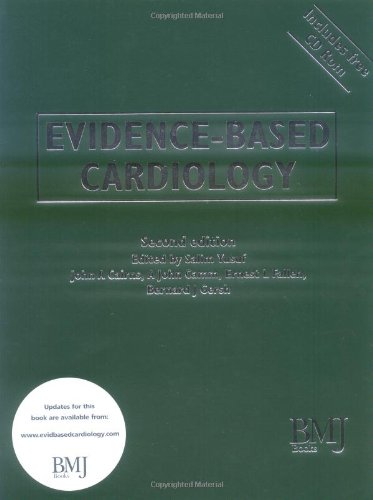
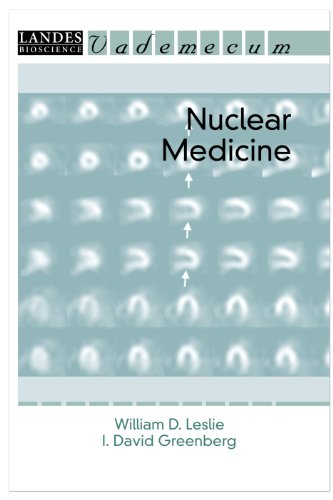
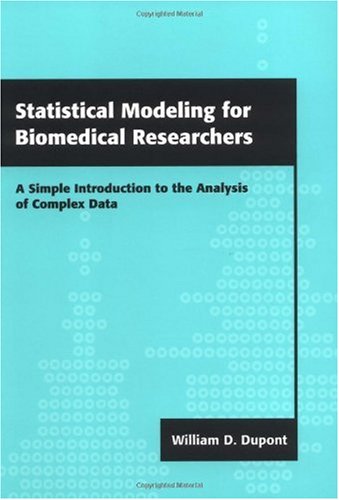

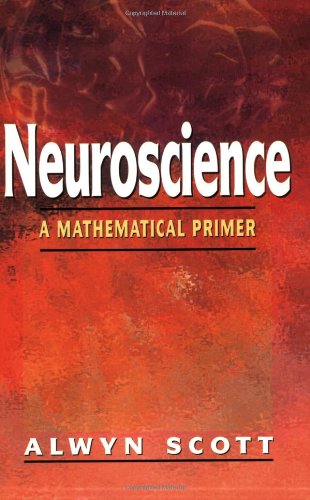
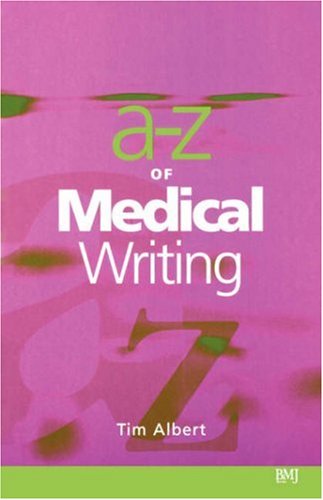

Reviews
There are no reviews yet.